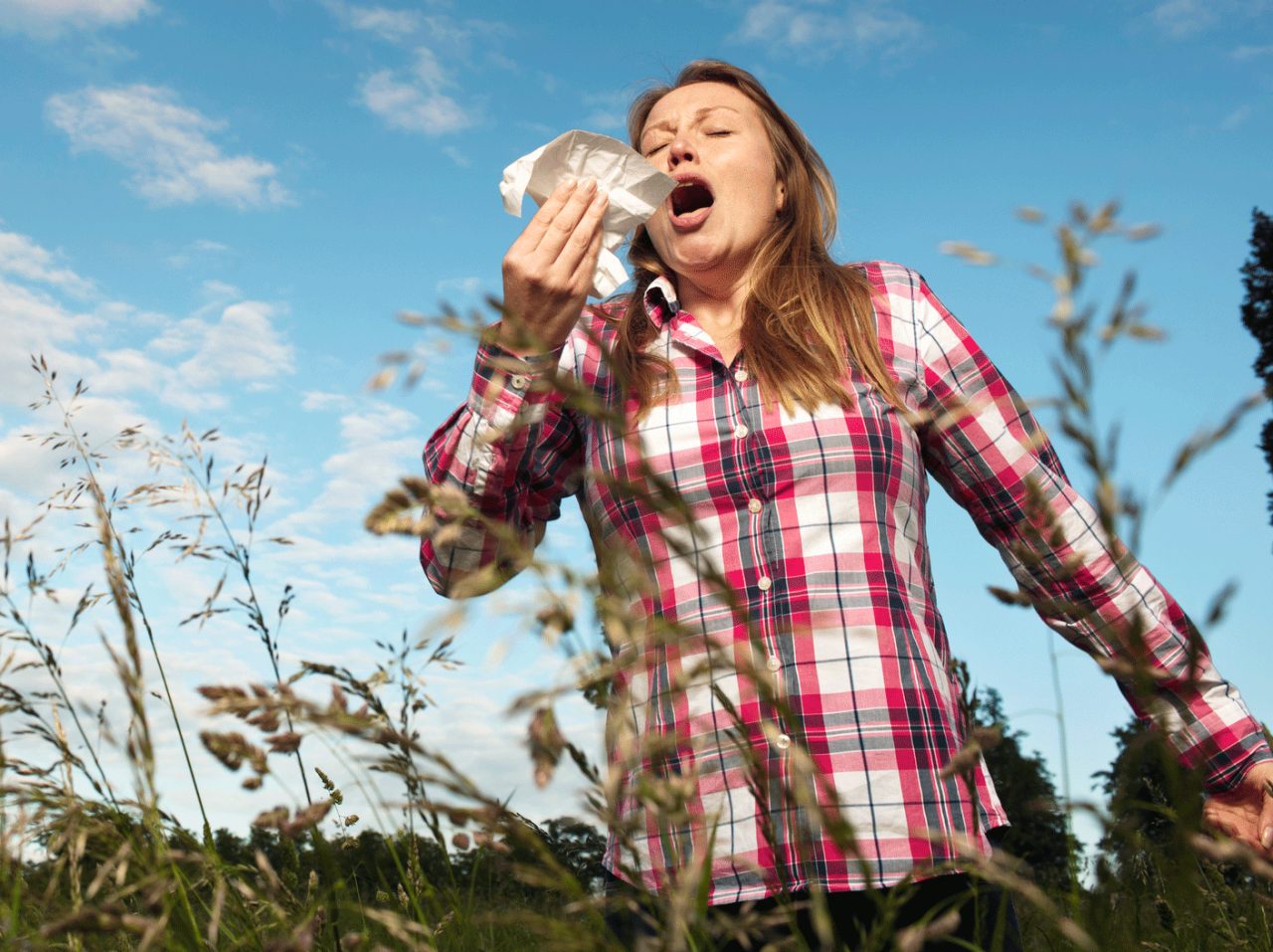Allergy to Pollen

Sneezing outdoors? Are your eyes watery and itchy? You might have an allergy to pollen, often treatable with drugstore remedies. Here’s what you can do about it.
You’ve heard the words all your life, but what exactly is an allergy to pollen?
Pollen is a fine powder containing tiny grains trees, flowers, grasses, and weeds produce to fertilize other plants. It gets in the air during their mating season and reaches your eyes and nose.
Your body’s immune system produces chemicals to keep viruses and bacteria from hurting you. When you have an allergy, your immune system is responding to something harmless as if it was an enemy. Those responses cause your symptoms. It doesn’t take a high pollen count to trigger your allergic response.
An allergy to pollen could also be called hay fever or allergic rhinitis.
YOU MIGHT ALSO LIKE: Our Fall Allergies section
What are the symptoms of an allergy to pollen?
You might sneeze loudly. Your nose could be unpleasantly stuffed up with mucus. The skin beneath your eyes might swell up and become bluish, or you could feel pain in your face. Your eyes might get itchy and water. Post-nasal drip could trigger coughing, or your throat could be scratchy. Some people lose their sense of taste or smell.
Depending on the trigger, your symptoms can come year-round or only in certain seasons.
Is it really a cold?
If you have a thick yellow discharge from your nose, a fever, and body aches, you probably have a cold, which should go away in a week. If your symptoms last longer, suspect an allergy.
What are the different types of pollen allergies?
There are hundreds of plant species that could trigger an allergic response. In the spring, birch trees bloom and release tiny grains into the air that can travel far from the tree. Oak trees also send out pollen in springtime. Summertime symptoms are usually caused by grass. Ragweed may begin spreading pollen as early as the end of July and bother you into October or longer if the weather isn’t cold.
How is a pollen allergy diagnosed?
A big clue is the time of year your symptoms arise. To rule out other issues, you might see an allergist. In a skin prick test, an allergist will test your skin’s reaction to many possible allergens at once, through tiny needles. Within 20 minutes you might see redness, swelling, or a raised welt like a hive or feel itchy.
A skin prick test will check your response to different kinds of pollen, as well as dust mites, cockroaches, molds, and dander from pets.
If your problem is difficult to manage, your allergist may recommend immunotherapy — a series of shots that expose you to the allergen with the goal of teaching your body to react less.
You may need to see an ear, nose, and throat doctor (or ENT), also called an otologist, to check for nasal polyps or another problem in your nose that might trigger sinus infections. These can aggravate hay fever and may require treatment.
How can you treat an allergy to pollen?
It would be ideal if you could stay away from pollen, but it’s everywhere outdoors and worse in specific places and some regions. So, if your allergy to pollen is very bad, you may need to stay indoors on dry, windy days. You can find out when pollen counts are high online or via text alerts. Wear a dust mask, or stay indoors and close the windows.
You can use medications to treat your allergies.
- Try antihistamines, including cetirizine (Zyrtec), levocetirizine (Xyzal), loratadine (Alavert, Claritin), fexofenadine (Allegra Allergy), and diphenhydramine (Benadryl).
- Decongestants such as pseudoephedrine (Sudafed) can help a stuffy nose.
- Some over-the-counter medications combine the two.
You can also take action to prevent allergies.
- Irrigate your nose with saline solution, using a squeeze bottle, neti pot, or electric irrigator.
- Take off clothes worn outside immediately when you come in and wash them. Use a dryer rather than a clothes line.
- Run air conditioning to filter the air.
- Use a portable high-efficiency particulate air (HEPA) filter or dehumidifier.
- Vacuum often with a vacuum cleaner that also has a HEPA filter.
What are the complications of an allergy to pollen?
Hay fever can make it hard to sleep and function at work and school. It may increase symptoms of asthma, or trigger chronic sinusitis. In children, it can trigger ear infections.
These are all reasons to get immunotherapy, although it can take a year to three years before you’ll notice a change.
YOU MIGHT ALSO LIKE: Our Asthma, Allergy, and COPD Care section
Updated:
February 17, 2023
Reviewed By:
Janet O’Dell, RN